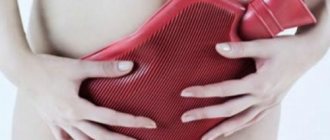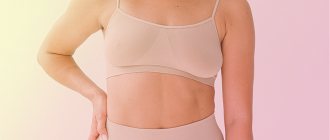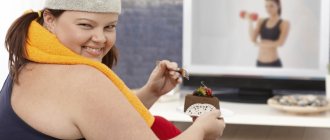Benefits of running with weights
Running weights are used to improve muscle strength, speed and jumping ability. Amateurs can use weights when jogging to increase their labor costs, which will create an increased calorie consumption, which means the process of burning excess fat will be faster and more effective.
Track and field athletes (as well as football players, basketball players and all-around athletes) use weights to improve their athletic performance in disciplines that require explosive strength, endurance, and speed. For bodybuilders, running with weights on their legs is one of the most effective ways to give beautiful relief to the muscles of the thighs, buttocks and legs, and strengthen the cardiovascular system in the shortest possible time. Running with weights on your hands will help strengthen the muscles of the shoulder girdle and upper back, which will undoubtedly improve the performance of fans of team sports and martial arts.
Why are leg weights needed and for what workouts?
Despite the obvious benefits, weights are not suitable for any form of exercise. ACT notes that they are effective for active activities such as walking, aerobics and step aerobics. And you shouldn't use weights for more vigorous workouts like running. Using weights will change your workout rhythm, which is not a good thing. You may, for example, move your arms more vigorously, which will ultimately lead to injury due to the added stress on your muscles, ligaments and joints.
Weights perform well during strength training with your own weight, such as leg swings, lunges, squats and other exercises that involve repeated low-intensity movements of certain parts of the body. With the help of weights in this case, you can tone your muscles more quickly.
Exercises for the buttocks include various swings and leg abductions
Swing your legs to a standing position
- Stand against the wall, holding the support with your hands.
- Pull your straightened leg back as far as possible.
- Return to starting position.
- Repeat the exercises for the buttocks the required number of times, and perform the exercise with the other leg.
Pulling the leg back from the “standing on all fours” position
- Get down on your knees and place your palms on the floor.
- Raise your leg, moving it back and straightening it.
- Return to starting position.
- Do the required number of repetitions, move to the other leg.
Leg abduction to the side
- Take the same position as in the previous exercise.
- Raise the bent leg at the knee and straighten it.
- Return to starting position.
Weights are often used for running. You should start training with walking with weights, gradually moving on to running for short distances.
Before training, it is important to do a good warm-up and prepare all body systems for intense work.
If there are contraindications, running should be abandoned and replaced with walking.
General information about leg weights
Leg weights are worn on the legs during training, and due to the additional load, the load on the muscles increases and the difficulty of the exercise increases. Most often, these cuffs are used in cardio training and in training for the legs and buttocks, less often in abdominal training. Weights are convenient and compact sports equipment, so they are very common in home workouts.
Who can benefit from leg weights?
- For those who want to work on strengthening and toning the muscles of the thighs and buttocks
- For those who want to increase the effectiveness of cardio exercises and increase calorie burning.
- For those who practice martial arts and martial arts and want to increase their punching power.
- For those who run, leg weights will help increase the load.
- For those who don’t play sports, but walk a lot and want to combine walking and fitness.
- For those who train at home and do video training that uses weights.
The benefits of leg weights
Leg weights are not the most popular sports equipment when compared with the more familiar dumbbells, barbells, fitballs and expanders. Let's figure it out, is it really necessary for training? What are the benefits of regular training with leg weights:
1. Leg weights help you lose weight. Using additional weight increases the load, which means you burn more calories per workout and reduce body fat.
2. Thanks to weights, you work on increasing endurance, strengthening the heart muscle and developing the cardiovascular system.
3. Leg weights tone your muscles and add definition to your body by using extra weight. This will help you get rid of problem areas, especially on the thighs and buttocks.
4. With the help of leg weights it is very easy to complicate any cardio workout, including walking, running, dancing, jumping. You don't have to constantly increase the speed or duration of your cardio session, just use weighted cuffs. Some even use weights while swimming.
5. Thanks to weights, you can diversify your workouts and include additional muscle groups in your work. They will be useful to you not only in classic cardio and strength training, but also in Pilates, yoga, callanetics, and barre training.
6. With leg weights, you can work on developing firm buttocks and slender legs without lunges and squats, which are quite traumatic exercises. For example, with exercises such as leg raises, it is very difficult to increase the load using dumbbells. In this case, weighted cuffs will be very useful for you:
As a result of regular training with weights, you will notice an improvement in your speed, strength and endurance. The added weight provides a great workout for the glutes and thighs, making it the ideal piece of equipment for those looking to target their lower body. However, leg weights are not as harmless as they seem at first glance.
Disadvantages and harms of leg weights:
- Leg weights put stress on your ankle and put more pressure on your ankle, putting you at risk of injury while exercising.
- The ankle area has virtually no muscle and cannot handle heavy weights, so you won't be able to continually add weights to your body even if your core muscles are ready for it.
- Various studies show that frequent walking and running with weights can cause various leg injuries or joint and tendon problems.
- Weights also put pressure on the hip and knee joints, so you shouldn't immediately take on too much weight with the cuffs.
Your muscles, joints and tendons need rest, so avoid long-term use of leg weights, especially if you have weak joints or a history of limb injuries. In addition, try to increase the weight of the weights gradually, starting with the minimum (0.5-1 kg), even if you are an experienced athlete.
We also emphasize that leg weights are used to strengthen and tone muscles, as well as burn calories and fat. You should not expect that such sports equipment will become your good assistant in the growth of muscle mass. For such purposes, it is better to use free weights and exercise machines.
Contraindications for exercises with leg weights
- Limb injuries
- Phlebeurysm
- Joint problem
- Recent surgeries
- Presence of urolithiasis
- Cardiovascular diseases
- Large overweight
The best weight belts
These are special belts equipped with a load weighing from 3 to 10 kg. This belt is secured at the waist with straps. The volume of the belt varies from 50 to 110 cm. Weights of this type are usually made of leather, nylon and neoprene, they are convenient for exercises on the horizontal bar, as well as for running.
Bax
Made from high-strength fabric that can withstand intense loads and friction. Adjustment is made using weights of 250 g. Using a strap, the belt is fixed at the waist, tightly fitting the cotton side to the body. The device is recommended for strength training, running, gymnastics, walking, and endurance training. The belt is easy to use and suitable for both men and women. The average price of a product is 549 rubles.
weight belt Bax
Advantages:
- high quality materials;
- weight adjustment;
- for a wide range of exercises;
- attractive price;
- efficiency.
Flaws:
- Weights are not included.
ONEST 5 kg
The weight of this weighting device is fixed, it cannot be increased or decreased, so the device is suitable for advanced athletes. The belt is used for running, strength training, and strengthening the back muscles. "ONEST" is securely fixed at the waist with a long Velcro strap, suitable for any size. The internal filling consists of quartz sand distributed in special pockets, which ensures an even load on the body. The outside of the belt is made of soft nylon, it is not visible under sportswear. The fabric is highly reliable, does not fade in the sun, and is resistant to deformation. Pockets for cargo are securely stitched with strong threads. The average cost is 1,074 rubles.
ONEST weight belt 5 kg
Advantages:
- the fabric is pleasant, does not rub;
- reliable design;
- comfortable wearing;
- fits tightly and does not slip.
Flaws:
- not detected.
Banzai 5 kg “Swimmer”
A device recommended for swimming, as well as sports such as water polo, hockey, football, handball, basketball and athletics. The belt is made of durable synthetics (“Ballistic Nylon 1680 D”), with soft cotton fabric sewn inside. The load is regulated using metal weights weighing 150 g. Thanks to the reliable fastening system, the Banzai Swimmer fits tightly to the waist, does not twist or fall off during active actions. The average cost is 4,370 rubles.
Banzai weight belt 5 kg “Swimmer”
Advantages:
- nice material;
- evenly distributed load;
- ergonomic design;
- Suitable for water sports and activities on the water;
- convenient adjustment.
Flaws:
- not detected.
WORKOUT Q12
The maximum weight of this model is 12 kg, the adjustment step is 500 g. Suitable for both initial lessons and a professional approach. The weight is made of metal cylinders, placed in pockets where they are securely fastened. The belt is suitable for any body type; using two straps you can adjust the size. The Velcro is long enough for the belt to fit well on both thin clothing and winter sportswear.
The product includes two types of fabric - Oxford 900 and Baltex 260. "Oxford 900" is made of nylon fibers, the weaving of which provides resistance to deformation. The color of the fabric does not deteriorate from exposure to water, and also does not fade in the sun. "Baltex 260" is a durable, hygroscopic material made from polyester threads. The design of the model is contrasting, dynamic, combining black and red colors. The average cost is 5,800 rubles.
weight belt WORKOUT Q12
Advantages:
- modern materials;
- convenient step size for load regulation;
- comfortable to sit on summer and winter sportswear;
- The loads have a soft PVC shell.
Flaws:
- not detected.
Why running with additional load?
To increase the effectiveness of any physical exercise, including running, you need to add variety to your workouts and modify them to suit your physical abilities. The following methods serve as tools for increasing the complexity of running training:
- Running with changes in speed (for a while);
- Running with lengthening distance;
- Changing running tactics (alternating fast and slow paces);
- Running on altered terrain (uphill);
- Running with weights.
This is interesting
- Running with dumbbells, learn from our article how to properly run with dumbbells in your hands
- Quotes about running, read aphorisms and proverbs about running if you are looking for a boost of motivation
- What is doping? What doping for running can you get from a pharmacy?
How to properly run with weights
If you're new to running, adding weights to your workout routine can cause overexertion and even lead to injury. It is recommended to proceed according to the following plan:
- In addition to jogging, add active walking with weighted cuffs on your legs; their duration should be at least 25 minutes, regularly – 2-3 times a week.
- Gradually increase the intensity of your runs - adding 5-8 minutes to your running session weekly;
- After 4 - 6 months, start running with weights on your legs; the training time is determined individually, based on your well-being.
This is important Before starting any jogging, be sure to warm up, this will prepare the muscles for stress and protect the joints from injury.
If you are an athlete, are in the process of preparing for a competition, or want to improve your athletic performance, include running with weights in your training process. It is recommended to gradually increase the load - in this case, the weight of the weights: start with the minimum, gradually increasing it. Also try using a vest or weighted belt for running: it does not put stress on the spine, distributing the weight evenly throughout the body. Control your running technique: be sure to place your heel on the surface, distribute your body weight over the entire surface of the foot.
This is interesting
- How to make a parachute for running with your own hands, why do you need a running parachute?
- Why do you need elastic bands for training? Correct Application
Top 15 exercises with weights for legs and arms
Comprehensive training maximally utilizes all muscle groups. Select the weight of the cuffs individually, based on their level of training. Unfortunately, the weight of weights cannot replace the load with a barbell or dumbbells, so the exercises must be performed a large number of repetitions to obtain the necessary load. Perform the complex for 3-4 circles from 15 to 30 repetitions until you feel a burning sensation in the muscles. Train every other day, but no more than 4 times a week.
- Extending your leg to the side while standing.
- Taking the leg back while standing.
- Swing your leg back on all fours.
- Back lunge + forward leg swing.
- Stepping onto the bench alternately + bending your elbows (biceps).
- Overhead press (triceps).
- Tilt with balance on one leg.
- Bend your body forward with your arms above your head.
- Leg adduction while lying on your side.
- Raising your arms to the sides while lying down.
- Overhead press with arms.
- Swing your arms out to the sides.
- Wave your arms in front of you.
- Fold - raising the hand to the opposite foot.
- Raise your legs 45 degrees.
Making your own leg weights
Materials and tools:1. Fabric.2. Sand.3. Slings.4. Zippers (zip-locks) – sealed bags.5. Scotch tape for packaging.6. Threads, buckles, Velcro. As for buckles, you can buy them, make them yourself, or detach them from old unnecessary things (for example, a briefcase, a bag). 7. If the Velcro straps will be made manually, then you should stock up on pliers, wire, tongs or a grinder.8. Sewing machine.9. Needle.10. Scissors.11. Ruler.
Procedure: If sand is chosen as the material for weighting, it must be thoroughly sifted and, if necessary, dried. After it has acquired the desired appearance, you need to pour it into zippers. The easiest way to do this is with a bottle cap.
It is important to ensure that each package contains the same amount of sand. If you have kitchen scales, this will not be a problem.
If there are none, then it’s okay - you just need to use bags of the same size. 10x6 cm is recommended. When placing sand, it is important to ensure that it does not get into the latch, otherwise it will not close properly and the entire contents will crumble. The filling goes to the limit, but at the same time in such a way that it is convenient to close.
After filling, you should decide how the zippers will be positioned on the leg. It is best to prepare 20 pieces - 10 for each leg. Every 10 pieces need to be rewound together with tape. The packaging one is suitable, as it is wide enough, which is convenient when applying layers to ziplocks. In general, each of them has two layers of adhesive tape, which should be well secured.
Some useful tips
To make the use of weights as comfortable and easy as possible, and to ensure that the resulting device lasts a considerable time, you should always use a reliable bag in which the crumbly form is placed. This way the fabric will not come into contact with the fillers, and therefore it will last longer and will not wear out.
Another important point is what material is chosen as an aggravating element. In principle, any crumbly substance will do, but some options will be much better than others. And you should not choose materials as a filler that can injure the skin or other parts of the body. Such fillers include various sea stones or non-crumbly materials.
If you want to use salt, it is better to buy the option that says “Extra” on the package. This is explained by the fact that this salt has a softer structure. In this case, you still need to use a bag, since the material will not spill out from it alone. In addition, this way you can avoid skin irritation.
It is necessary to ensure that the weight is the same for both limbs. This way you can avoid overexertion, injuries and other unpleasant sensations. You should start training with a small weight, and then gradually increase the load.
If you use a disposable weight, you should not attach it to your leg with tape. It will be very difficult to unhook it after training, and if you tighten the limb too much, numbness will occur. Needless to say, how painful it will be for guys who don't bother shaving their legs to remove the adhesive tape.
As you can see, there are several ways to make weights that can be used by anyone with different sewing skills. A homemade weighting device can make training a real test of strength, especially if you perform exercises such as leg raises and leg raises. Light weights should be used first.
Start by making slow movements as you practice, but be very careful. If there are any problems with the knee joints, as well as the ankle and hip parts, it is better to consult a doctor before starting your workouts. You should not use such weights when walking, as they can lead to injuries and sprains.
It is not at all necessary to buy various expensive equipment, since now you know how you can make weights for your arms and legs at home.
The beauty of home-made weights is that the quality of weights will not be inferior to store-bought ones. You can choose absolutely any weight. In this way you can save money and get a good thing that you will be proud of, because it was made yourself.
Effective exercises for arms and legs with photos
Exercising with additional weight is an effective method for developing endurance, strength and strengthening the body.
It is important to understand that before you start training, you should warm up. If you avoid this condition, the chance of getting injured during exercise increases significantly.
Particular attention should be paid to those places where the weighting material is put on, for example, if the pad is attached to the ankle area, then you should carefully work on the ankle, etc.
To pump up the buttocks
To properly work the gluteus maximus muscle, you can use the following exercise. Starting position - emphasis on palms, elbows and knees - straight back, face looking at the floor. Now you need to lift your legs up one by one, as if pushing something away from you. The optimal weight of the weighting material for this exercise is 0.5-1 kg.
For slimming legs
In order to burn extra calories and also lose a few kilograms, you need to resort to special exercises. Training should be comprehensive, in which all muscle groups will be involved. Thus, as gymnastics against fat deposits, it is necessary to resort to the following exercises:
- legs together, hands on the belt, alternately lifting the legs by bending them at the knees and holding them in a bent position for at least 3 seconds;
- lying on your back, you should swing with straight legs, holding them in the raised position for several seconds;
- from a position lying on your side, it is necessary to abduct your legs upward, raising them slightly above shoulder level - everything should be done smoothly, slowly abducting and lowering the limb;
- starting position – feet shoulder-width apart, alternate lunges are carried out, in which one leg forms a 90-degree knee bend angle, and the other is completely straightened.
To carry out weight loss exercises, it is best to use adjustable leg weights, which allows you to properly distribute the load, preventing injuries and overexertion.
How to make a WEIGHTED VEST with your own hands – Street Workout
I would like to say a few words right away about the advantages of this equipment. A weighted vest can be used for:
All measurements have been taken, all that remains is to take a few simple steps towards the goal: 1. Let's start with a plan. The plan is a rectangle, the basis of the foundations. It is built according to the measurements of OG (chest girth) and DI (product length). The width of the front and back of the vest is the same. The neck line is drawn on the pattern (to avoid confusion, let’s make it red) and the width (OS) is determined. 2. The width of the front neck (blue) must correspond to the back of the vest, its depth is not less than 8 cm. The shape - oval, corner - is at your discretion. 3. The armhole line (green) can coincide with the side line (lowered shoulder), coincide with the width of the shoulder (12-13cm), or fit onto the shelf (an example would be a T-shirt). The bottom of the armhole can be rectangular or oval. 4. For a vest with a zipper (just our case), the front is knitted in two parts, the pattern is divided along the center line. 5. On the pattern you need to draw the width of the trim (yellow lines) along the lines of the armhole, neckline, side, and bottom of the product. The shaded part of the pattern, as shown in the figure, in our case will be used as pockets for “weights”. 6. All that remains is to sew it up. PS the zipper must be strong enough, since holding 30 kg is no joke.
It would seem that everything, but it was not so. The most important thing is yet to come! - these are weights. Weights are a problem that anyone who is planning to make such a vest will face. The problem is that it is very difficult, almost impossible, to get ready-made samples (and even 42 pieces). Therefore, it’s easier to do it yourself, as we read below.
How to make weights for a weighted vest? We will use smooth, preferably round, reinforcement. And so, we buy a metal rod, 30-32 mm in diameter, 5 meters long (not necessarily in one piece). This length is just enough for all 42 cells.
Now comes the most difficult step - preparing samples. This is backbreaking and harmful work, which also requires at least a grinder (aka an “angle grinder”), so if possible, do not skimp on cutting the reinforcement. Sample sizes: 100x30 (or 32) or 115x30 (or 32)
A little math for reference: 42 cylinders with a diameter of 32 mm and a length of 115 mm weigh 30 kg. 30 kg * 10 UAH = 300 UAH ($37.5) plus 42 pcs. * 3 UAH = 126 UAH ($16). Total: 300 + 126 = 426 UAH ($53.3) After cutting, all samples MUST be sharpened so as not to tear the fabric. It is best if the ends of the weights are turned on a lathe. But I didn’t have such luck (in the sense of a lathe), so they gave me weights from a machine that cuts metal with a regular saw. It took about 50 minutes to cut all 42 weights.
And here's how scary they turned out:
Then began the process of cleaning off rust using sandpaper. After cleaning from rust, all the weights had their edges ground with a grinder taken from a friend. Washed with soap and water and lined up for opening with primer using a can:
At the final stage, the weights look like this:
A larger diameter will fit into the cells. Limit 36 mm. You can insert a block up to 13 cm long, but then the Velcro pockets will not close. An alternative to fittings can be bearings, nuts, etc.
That's all - the vest and weights are ready. Don’t forget that you need to dose the weight based on your capabilities. The result is important, and there is no result without quality. In strength sports, everything is natural, so you need to soberly assess your capabilities. In conclusion of the article, I would like to say that there are many models of weighted vests in the world. This article was written for a model authored by Denis Minin.
Criterias of choice
So, we figured out why weighting agents are needed - it’s time to choose a suitable weighting agent:
- Wearing comfort. No matter what, this indicator should be the most important. Indeed, unlike dumbbells, weights are worn for a much longer period of time - and any rubbing or improper balancing can lead to discomfort, and in rare cases even to dislocations.
- Weight of the weight. It should be chosen depending on your purpose and period of wearing. It is better to purchase several sets, for everyday wear, for cardio and for strength training.
- Target. Not only the weight of the weighting agent, but also the type of structure depends on this. For CrossFit, soft cuff weights filled with sand are best suited.
- Filler. Lead, sand and metal. Lead is rare, and metal is quite uncomfortable to wear, as it limits the range of movement. The best solution would be to purchase a sand weighting agent.
The best weighted vests
There are different types of such devices. They look like life jackets and also completely cover the body. You should buy a weighting material taking into account individual characteristics. Models can weigh from 3 to 30 kg. There is equipment for cardio training.
Original FitTools FT-SWAT-14
The vest does not have a fixed neckline. There are 4 plates that act as weights. Their weight is 3.5-14 kg. The elements are fixed on both sides of the equipment and also ensure an even load. The device can be adjusted according to height. The equipment consists of two halves connected by cables. There is a convenient chest pocket. A convenient fastening system with different attachments is provided. Steel and nylon are used for manufacturing. The materials are particularly durable. Suitable for use at home.
Advantages
- Functionality;
- Load dispensing;
- Comfortable fit;
- Possibility of adjustment.
Flaws
- Not found.
Ergonomic design contributes to long service life. There is no need to purchase additional weights.
Adidas
The functional vest has a weight of 10 kg. The load is distributed over the entire upper part of the hull. This creates resistance to every movement. The vest is fastened along the entire length with a zipper. It fits snugly to the body and is additionally secured with an elastic belt. Soft material is used for finishing, which allows you to wear the vest on your body. The loads take the desired shape. They can be removed depending on the intensity of your training. There are special fasteners on the pockets. The equipment can be adjusted to different sizes. Used for running and speed training. Adidas uses high quality fabrics.
Advantages
- Adjustable fasteners;
- Reliable cargo distribution;
- Special belt;
- Convenient use.
Flaws
- Not suitable for all sports.
Users are attracted by the particularly soft material. The product is easy to care for.
No special storage conditions are required. The company offers a one-year warranty on its products.
Cons of running with weights
Since weights increase the runner's weight, they create additional stress on his musculoskeletal system: the risk of injuries to the feet, joints, and knees increases. The meniscus, the cartilage shock absorber of the knee joint, is especially sensitive to increased load; damage to it can lead to serious problems and long periods of rehabilitation.
This is important If you experience discomfort, pain in your legs or knees, immediately contact a qualified specialist, undergo the necessary examination, and take the treatment prescribed by him. Do not trigger a possible disease and do not self-medicate.
Ankle weights
Additional load should be applied in the area that is slightly above the ankle joint. This will provide good resistance when your legs move. The purpose of the exercise is to increase the tone of the buttocks, calf, and quadriceps muscles.
With the help of additional resistance, you can achieve an increase in muscle mass in the legs. But you need to be very careful if you position or attach weights incorrectly, there is a risk of sprains, minor injuries or dislocations. All this usually happens while walking or running.
Reusable
To make it you need to take long socks, as well as beans, peas or beans.
- Weigh 450−680 g of beans or other types of cereals. You can use regular kitchen scales for this. This amount will be more consistent with the size of the sock. Place the beans in a bowl first so they don't spill and you don't have to start measuring again. And then begin to form a second pile, which will be equal to the previous one.
- We tie a knot, but step back one quarter from the top of the sock. Pour the beans in there. We tie the second knot. But make sure that these nodes are located approximately the same distance at the bottom and top. The beans should be located in the center of the sock.
- Tie the sock in place around the ankle or thigh. You can also attach it with Velcro, and this will provide additional fixation.
How much are?
The cost of the device will be low; you can buy it at any sports store. These accessories are universal, they do not require trying on before purchase, so you can choose them in online stores. The cost depends on the manufacturer and materials used. The simplest textile accessories weighing up to a kilogram, filled with sand, cost only 200 rubles. The cost of more durable models with metal weights and the ability to vary the load level starts from 500 rubles. Many amateur athletes prefer to sew weights themselves. All you need is durable material, Velcro, a sew-in zipper, a metal ring, weights for filling and basic sewing skills.











